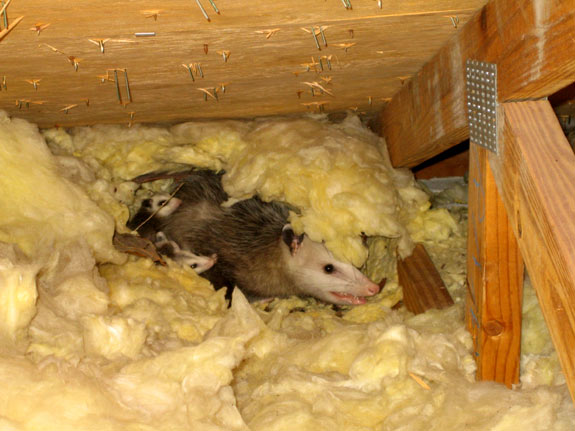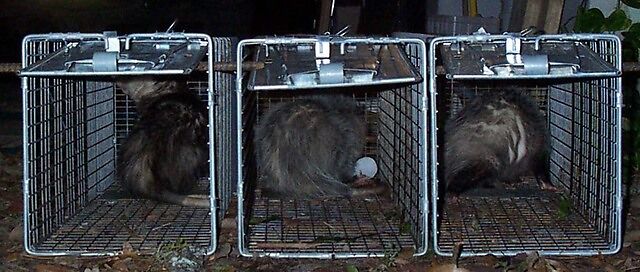Trapping An Opossum
If you’re reading this, you most likely suspect that there’s an opossum roaming around your property. While they can often go about their business without harming you or causing much of a nuisance, they can occasionally select a location that’s a little too close to home. Sheds, decking, foundations, really anywhere they can get to is free real estate. Much like rodents, the adaptability of opossums is one of their key strengths, and it has contributed to their successful proliferation in close proximity to humans.
Prevention

Of course, the best way to deal with opossums (and really any type of animal capable of infesting your home) is to block off any way for it to enter the area first. Construct and maintain proper fences, plug any holes under decking or screen with a wire mesh, and make sure there are no places where an opossum could conceivably burrow. Another thing to consider is that if you don’t remove the thing that is attracting possums to your area, it is likely that they will just keep coming.
However, if prevention is not an option – for instance, if the opossum has already made its home in your attic, or perhaps if it’s a more open area that can’t be fenced off – setting a trap is the next course of action.
Before Trapping
- To make sure that you don’t waste your hard-earned money on a shiny new trap that you can’t use, make sure to clear things with your local wildlife conservation authority. It is very common for opossum trapping to be illegal, or only allowed for those with a permit. If you can’t legally set traps in your area, you will have to find another way to coax it off your property.
- Another point to consider is that if it’s spring or summer, you may run the risk of separating a mother from its babies. You shouldn’t set traps at this time of year.
Get a Trap
Once you’re certain that you have permission to trap an opossum, and that you won’t be breaking up any families, opting for a “cat-trap” style trap is a good option. Opossums are roughly the same weight as most cats, so the trigger will be set off just as easily. Going for a trap that’s any bigger than that may mean that the trap doesn’t trigger at all, and the opossum might make off with a free snack.
Setting the Trap

- Set the trap in the area where you are seeing the most possum activity.
- Make sure you consider what bait you are using. Opossums aren’t picky eaters, and will happily munch on more or less anything they can get their hands on. However, their nose is how they find food, so smelly food is always a good bet. If you have any meat or fish that might be going a little bad, or a can of especially smelly dog food, this is likely to get the desired result.
- Once you have the bait, create a small trail of bait leading into the trap, with the majority of the food inside the trap. This does two things: it convinces the opossum that the food is safe, and persuades it to go for the big scoop.
- Make sure to lay the trap on a flat surface, and if possible anchor it to the floor. You don’t want to hurt the animal, and letting the trap roll around is only going to damage whatever there is around it, not to mention the opossum itself.
- Once the trap is set, make sure you check it regularly.
Next Steps
Once the opossum is safely inside, it’s time to transport it to a safe place. While your first instinct may be to take it as far away as possible, if your intention is to safely relocate the animal, you need to consider where you leave it. Relocating at night means the nocturnal opossum will have plenty of energy to adequately find shelter, and releasing it away from busy roads and other residential areas gives it the best chance at a stress-free life. Isn’t that what we’re all going for?
